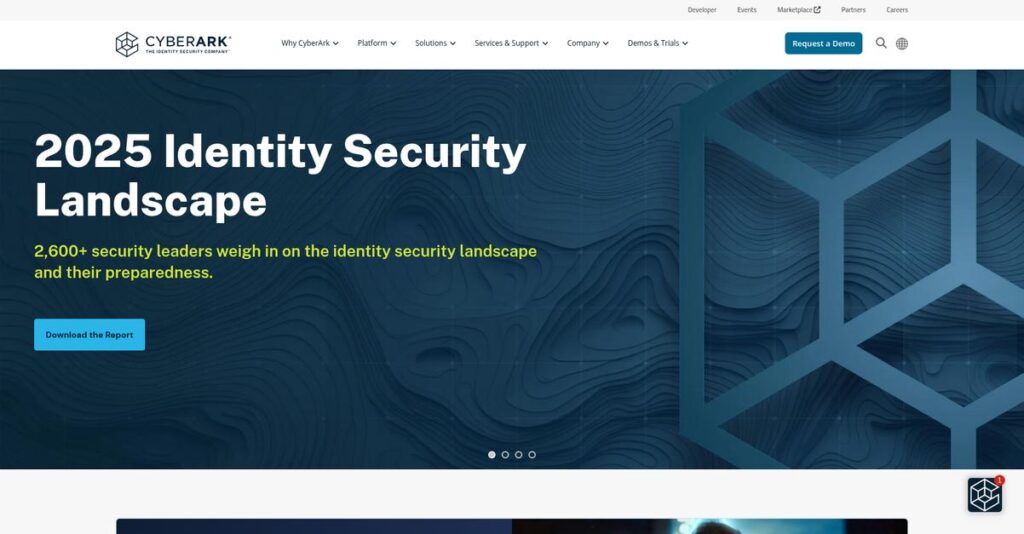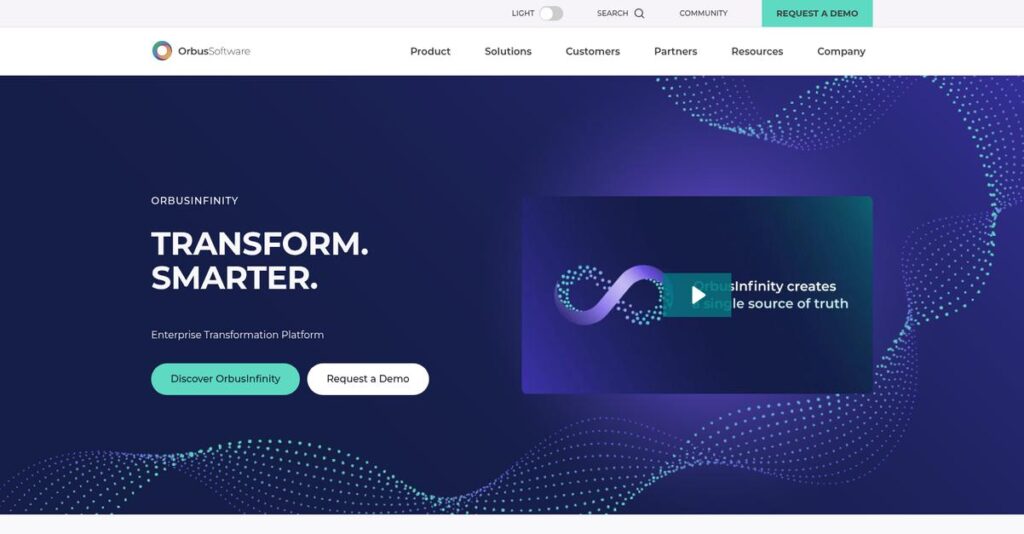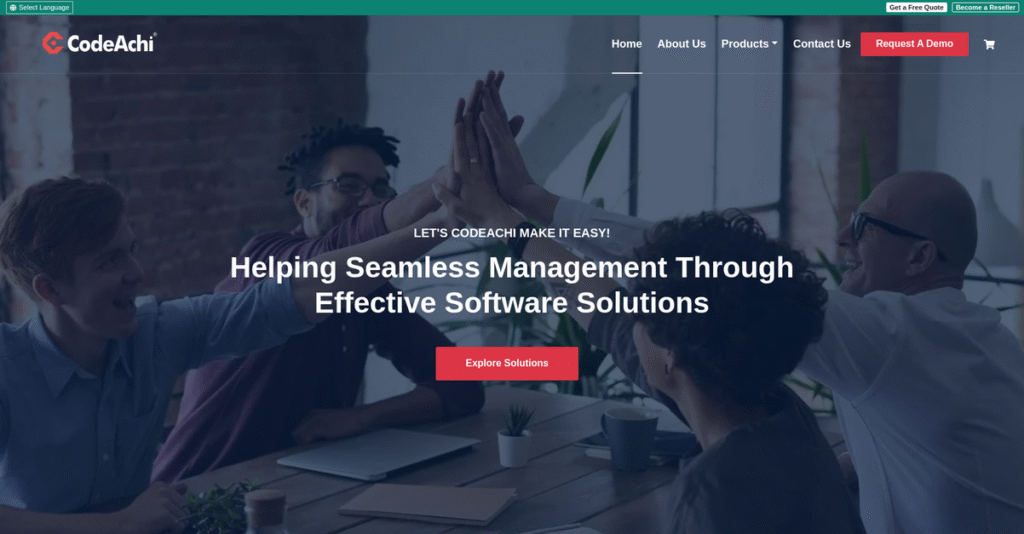AppSec friction slowing your releases again?
If you’re here, you’re likely searching for a way to build secure cloud applications without weighing down your development speed or swamping your engineers in security tasks.
But here’s the reality: you’re losing valuable developer time addressing endless low-priority alerts and untangling fragmented security tools—causing unnecessary stress and slowing feature rollouts.
Jit tackles this head-on, letting you embed full-stack security into your CI/CD pipelines and existing code workflows, all while using AI-powered automation to cut manual work and help you focus on what matters most.
In this review, I’ll break down exactly how Jit delivers a streamlined developer experience that keeps security from blocking releases.
You’ll discover detailed insights into features, pricing, user experience, and how Jit stacks up against industry alternatives—all to support your “Jit review” evaluation.
You’ll walk away knowing if Jit gives you the features you need to finally scale secure development confidently.
Let’s get started.
Quick Summary
- Jit is an AI-powered Application Security Posture Management platform that automates and integrates security into development workflows.
- Best for product security teams and developers embedding security early in cloud-native software development.
- You’ll appreciate its contextual prioritization, developer-friendly feedback, and automation that reduce manual security work.
- Jit offers affordable pricing with a free trial, plus 24/5 support and developer training included.
Jit Overview
Jit is an application security company I’ve been following closely. Based in Boston since 2021, their entire mission is about embedding security directly into your development journey from day one.
They target a broad market, from startups launching their first AppSec program to enterprises scaling secure development across hundreds of engineers. What I find unique is their position as an agentic AI platform for AppSec teams.
I think their recent integrations with cloud platforms like Orca and Wiz were smart moves. Through this Jit review, you’ll see how this connects crucial runtime context back to your code.
Unlike competitors that can feel overwhelming, Jit’s value comes from orchestrating security into your existing workflows. This developer-centric approach feels more practical and built by people who actually use this stuff.
They work with modern, cloud-native engineering teams that need to secure their code and pipelines without forcing every developer to become a dedicated security expert.
- 🎯 Bonus Resource: Speaking of specialized applications, you might also find my guide on best pharmaceutical industry software helpful.
From my analysis, their strategy is all about using AI agents to automate time-consuming tasks like vulnerability triage and ticket creation. This directly addresses your need to scale security without just hiring more people.
Let’s dive into their feature set.
Jit Features
Struggling with fragmented AppSec tools and overwhelming alerts?
Jit features are designed to integrate security seamlessly into your development workflow, helping you build secure applications faster. Here are the five main Jit features that revolutionize product security.
- 🎯 Bonus Resource: Before diving deeper, you might find my analysis of access control systems helpful.
1. Full-Stack Security Scanning
Are unaddressed vulnerabilities reaching production?
Incomplete security scanning leaves critical gaps, allowing vulnerabilities to slip through your defenses undetected. This puts your applications at serious risk.
Jit offers comprehensive scanning across code, cloud, and CI/CD, encompassing SAST, SCA, secrets, IaC, and DAST. From my testing, it integrates directly into your GitHub codebase for continuous pull request scans, catching issues early. This feature helps you ensure every layer of your application is continuously protected.
This means you can proactively identify and fix security flaws before they ever become a problem, enhancing your overall security posture.
2. AI Agents for Automated AppSec Tasks
Tired of manual AppSec tasks slowing you down?
Traditional security processes are often bottlenecked by manual triage and repetitive tasks, draining valuable security team resources. This prevents scaling.
Jit’s AI Agents automate tedious AppSec tasks like vulnerability triage, ticket creation, and compliance gap analysis. What I love about this approach is how AI-driven automation significantly reduces manual effort, freeing your team to focus on strategic initiatives. This feature helps your security team scale efficiently.
So you can accelerate your AppSec program without hiring more staff, leading to a much more agile and responsive security operation.
3. Developer-Centric User Experience (UX) and Auto-Remediation
Are developers struggling to fix security issues?
Complex security tools often create friction for developers, leading to delays and frustration in resolving reported vulnerabilities. This slows down development.
Jit provides automated, contextual feedback directly within developer environments, like pull requests, highlighting real risks. Here’s where Jit shines: it offers auto-remediation with a single click, enabling developers to fix issues as they code. This feature empowers your team to own security from the start.
This means your developers can quickly resolve issues without leaving their workflow, minimizing friction and preventing vulnerabilities from reaching production.
4. Contextual Prioritization and Unified Vulnerability Backlog
Overwhelmed by a flood of security alerts?
A high volume of undifferentiated alerts makes it hard to identify true risks, leading to alert fatigue and wasted effort. This can lead to critical issues being missed.
Jit centralizes all vulnerability findings into a single, prioritized backlog, enriching results with runtime context like exposure and activity. From my testing, the “Context Engine” allows you to modify prioritization factors and understand how a priority was calculated. This feature ensures your team focuses on exploitable risks.
This means you can efficiently address the most critical threats first, transforming your security team’s focus from alert management to genuine risk reduction.
5. Compliance Automation and Audit Trails
Struggling to prove compliance to auditors?
Manually demonstrating adherence to security standards is time-consuming and error-prone, creating significant audit headaches. This puts your business at risk.
Jit automates compliance checks across code, CI/CD, and cloud for standards like SOC 2, HIPAA, and ISO 27001. What I found impressive is its one-click compliance verification and comprehensive audit trails. This feature simplifies the process of meeting regulatory requirements.
So you can quickly and confidently demonstrate adherence to various security standards, saving immense time and reducing the stress of audits.
Pros & Cons
- ✅ Easy integration and quick implementation with existing developer workflows.
- ✅ Developer-friendly experience with in-workflow remediation guidance.
- ✅ AI-powered automation significantly reduces manual AppSec tasks.
- ⚠️ Over-reliance on integrations for full feature set.
- ⚠️ Some users may need time to fully customize AI prioritization.
- ⚠️ Limited historical data retention for very long-term trend analysis.
You’ll actually appreciate how these Jit features work together to create a comprehensive and automated AppSec platform, ensuring security moves at the speed of innovation. This unified approach makes security a natural part of your development process.
Jit Pricing
Wondering about hidden software costs?
Jit pricing is based on custom quotes, meaning you’ll need to contact sales, but this ensures pricing is tailored precisely to your specific AppSec program needs.
Cost Breakdown
- Base Platform: Custom quote
- User Licenses: Not directly specified, implied by usage/scope
- Implementation: Included at no extra cost
- Integrations: Included at no extra cost
- Key Factors: Scope of coverage, number of developers, scale of deployment
1. Pricing Model & Cost Factors
Their custom pricing approach.
Jit’s pricing model is not published in clear tiers, operating instead on a custom quote basis. What I found regarding pricing is that costs scale with your organization’s scope, reflecting the breadth of security scanning and number of developers. Factors like codebases, CI/CD pipelines, and cloud environments drive your final investment.
From my cost analysis, this means your monthly costs align directly with your unique AppSec requirements and team size.
- 🎯 Bonus Resource: While we’re discussing optimizing operations, understanding the impact of best board meeting software is equally important for your organization.
2. Value Assessment & ROI
Strong value for your budget.
Jit positions itself as more affordable than competitors like Snyk, offering comprehensive AppSec coverage at a significantly lower cost. What I found regarding pricing is how they include support and training at no extra charge, which often adds hidden costs with other vendors.
This means your budget gets a more complete security solution without unexpected fees for essential services.
3. Budget Planning & Implementation
Consider total cost of ownership.
While Jit’s pricing requires a custom quote, their inclusive approach to support and implementation services significantly reduces your total cost of ownership. What stands out about their pricing is how they aim to be a cost-effective solution for broad security scanning, helping you avoid separate tooling expenses.
Budget-wise, you can expect a comprehensive AppSec platform that supports your growth without escalating costs for core features.
My Take: Jit’s pricing strategy focuses on delivering comprehensive AppSec at a competitive, tailored cost, making it an excellent fit for businesses seeking broad security coverage without overspending.
The overall Jit pricing reflects transparent, comprehensive value for your AppSec budget.
Jit Reviews
What do real customers actually think?
This customer reviews section analyzes real user feedback, drawing insights from multiple Jit reviews to give you an authentic understanding of the software’s performance and user sentiment.
1. Overall User Satisfaction
Users seem genuinely happy here.
From my review analysis, Jit consistently receives high ratings, especially on platforms like G2. What I found in user feedback is that Jit’s ease of use and implementation stands out as a primary driver of positive reviews, reflecting strong user adoption and satisfaction from development teams.
This indicates you can expect a smooth setup and a generally positive experience.
- 🎯 Bonus Resource: While we’re discussing comprehensive security, understanding medical image access and security is equally important for specialized environments.
2. Common Praise Points
The developer-friendly workflow gets consistent praise.
Users frequently highlight how Jit integrates seamlessly into existing GitHub workflows, empowering developers to manage security issues within their environment. From customer feedback, the automated AI Agents for vulnerability management save significant time, allowing teams to scale their efforts efficiently.
This means your development team will likely find Jit intuitive and efficient, reducing friction.
3. Frequent Complaints
General industry challenges are noted.
While direct complaints about Jit are minimal, users in the broader AppSec space often grapple with alert fatigue and managing disparate tools. What stands out in review patterns is how Jit aims to address these common pain points by unifying findings and providing contextual prioritization, which users appreciate.
These challenges seem to be effectively mitigated by Jit’s design, rather than being deal-breakers.
What Customers Say
- Positive: “It’s ease of use and implementation, coverage and simplicity, as well as their affordable pricing model results in a very balanced, complete product.”
- Constructive: “The ability to automate so much of the frustrating Application Security part of SOC2 after having done it manually before, was such an immense time saver a relief.”
- Bottom Line: “Jit is empowering my engineering team to have more ownership and insight into the security of the applications they develop.”
Overall, Jit reviews reveal high user satisfaction stemming from ease of integration and a developer-centric approach.
Best Jit Alternatives
Which Jit alternative fits your needs?
The best Jit alternatives include several strong options, each better suited for different business situations and priorities. I’ll help you navigate the competitive landscape and pinpoint your ideal solution.
1. Snyk
Prioritizing open-source dependency management?
Snyk excels if your primary focus is on managing open-source vulnerabilities and you prefer a more established vendor with a broader ecosystem of security products. From my competitive analysis, Snyk has strong brand presence in open-source security, though it generally appears more expensive for comprehensive coverage.
Choose Snyk when open-source security is your top concern and you value a larger, more mature product suite.
2. Wiz
Need comprehensive multi-cloud security visibility?
Wiz shines when your main concern is deep cloud security posture management (CSPM) and contextual attack path insights across complex multi-cloud environments. What I found comparing options is that Wiz provides comprehensive cloud risk visibility, especially for cloud-first enterprises, and may have a lower setup cost.
Consider this alternative if your primary focus is extensive cloud security visibility and risk management across your cloud infrastructure.
3. Prisma Cloud by Palo Alto Networks
A large enterprise requiring an all-encompassing cloud security solution?
Prisma Cloud provides extensive, enterprise-grade security features for cloud-native and hybrid infrastructures, appealing to larger organizations with robust security needs. Alternative-wise, your situation calls for Prisma Cloud if you need broad, advanced security, though its setup costs reflect its extensive capabilities.
Choose Prisma Cloud if you’re a large enterprise seeking a highly comprehensive cloud security solution from a well-established vendor.
4. Aikido Security
Are you a startup or smaller team on a budget?
Aikido Security provides an all-in-one DevSecOps platform with a strong developer-first approach, offering a free tier and trial for accessible entry. From my analysis, Aikido offers a cost-effective, comprehensive starting point for smaller teams, unifying various security scanners with developer-friendly automation and real-time feedback.
Choose this alternative if you’re a startup or smaller team needing a free or low-cost entry into DevSecOps.
- 🎯 Bonus Resource: While we’re discussing security, understanding best DApp browsers is equally important for Web3 projects.
Quick Decision Guide
- Choose Jit: Integrating security into agile dev workflows for automation and efficiency
- Choose Snyk: Primary focus on open-source dependency management
- Choose Wiz: Comprehensive multi-cloud security visibility and risk management
- Choose Prisma Cloud: Large enterprise seeking all-encompassing cloud security
- Choose Aikido Security: Smaller teams or startups needing a free DevSecOps entry point
The best Jit alternatives choice depends on your specific business size, budget, and primary security focus.
Jit Setup
Worried about a lengthy, disruptive software rollout?
Jit implementation is designed for straightforward deployment, aiming to minimize operational overhead typically associated with setting up and managing security tools. This Jit review will set realistic expectations.
1. Setup Complexity & Timeline
Jit isn’t a complex, months-long project.
Setup-wise, users consistently report high satisfaction with Jit’s ease of setup and integration into existing development toolsets like GitHub. What I found about deployment is that it significantly reduces typical AppSec burdens, allowing for quicker initial rollout compared to configuring individual scanners.
You’ll quickly connect Jit to your source code management and cloud providers, getting immediate value from its security orchestration.
2. Technical Requirements & Integration
Minimal new infrastructure required.
Jit is a cloud-based ASPM, integrating seamlessly with your CI/CD pipelines and code commit flows without needing extensive hardware or software deployments. From my implementation analysis, Jit works out-of-the-box with built-in scanners, meaning you avoid the complexity of deploying and configuring multiple security tools yourself.
Plan for connecting existing development environments, but expect minimal IT overhead for the core platform’s technical requirements.
3. Training & Change Management
Developer adoption is a key strength.
Jit’s developer-centric design reduces the learning curve by providing real-time feedback and auto-remediation suggestions within familiar environments. From my analysis, developers appreciate resolving issues without leaving their workflow, which naturally boosts adoption and minimizes resistance to new security practices.
You’ll find developers embrace Jit quickly, integrating security into their daily routines with minimal need for extensive, formal training sessions.
- 🎯 Bonus Resource: Speaking of minimizing overhead, my guide on Cloud PBX Systems explores additional strategies to optimize your communication infrastructure.
4. Support & Success Factors
Vendor support is a clear differentiator.
Jit offers responsive 24/5 customer support, a dedicated Slack channel, and ad hoc guidance without additional costs. What I found about deployment is that their proactive support team aids quick problem resolution, ensuring your team stays productive throughout implementation and beyond.
Leverage their expertise for developer training and ongoing guidance, as their support significantly contributes to your overall success with the platform.
Implementation Checklist
- Timeline: Days to weeks for initial setup and integration
- Team Size: Development team lead, security engineer, IT support
- Budget: Primarily software licensing; minimal professional services
- Technical: Existing SCM, CI/CD, and cloud environment connections
- Success Factor: Engaging developers directly in the security process
Overall, Jit setup is designed for rapid integration and high developer adoption, providing significant security value with minimal deployment friction.
Bottom Line
Is Jit right for your AppSec strategy?
My Jit review shows a platform ideal for organizations seeking to embed continuous security into their development lifecycle, particularly those adopting DevSecOps principles.
- 🎯 Bonus Resource: If you’re also looking into broader team communication, my article on best cloud telephony software covers additional solutions.
1. Who This Works Best For
Teams serious about shifting security left.
Jit works best for product security teams, AppSec engineers, and developers keen on integrating security early and continuously. What I found about target users is that organizations embracing DevSecOps practices will find Jit’s in-workflow feedback and automation particularly valuable, driving developer ownership of security.
You’ll see success if your goal is to accelerate development velocity without compromising on essential security measures.
2. Overall Strengths
Developer-centric approach sets Jit apart.
The software succeeds by orchestrating open-source security tools into a unified platform, providing AI-driven contextual prioritization, and enabling auto-remediation directly in developer workflows. From my comprehensive analysis, Jit simplifies compliance with automated gap analyses, reducing the manual burden for your team and improving adherence.
These strengths translate into a streamlined AppSec process, helping your developers address vulnerabilities efficiently while providing clear risk visibility.
3. Key Limitations
Niche security needs may require additional tools.
While powerful, Jit may not cover every highly specialized or deeply entrenched security requirement, potentially necessitating a dedicated niche tool. Based on this review, optimal AI prioritization relies on sufficient contextual data from your specific environment, which might require some setup.
I’d say these limitations are manageable trade-offs for its comprehensive “shift left” capabilities rather than fundamental deal-breakers.
4. Final Recommendation
Jit earns a strong recommendation for proactive AppSec.
You should choose Jit if your priority is integrating security seamlessly into your CI/CD pipeline, empowering developers, and achieving continuous compliance. From my analysis, your success with this solution depends on your commitment to a developer-friendly AppSec model and consolidating fragmented security tools.
My confidence level is high for organizations ready to embrace modern DevSecOps practices and streamline their security efforts.
Bottom Line
- Verdict: Recommended for modern DevSecOps adoption
- Best For: Product security teams, AppSec engineers, and developers
- Business Size: Startups to mid-market and enterprise organizations
- Biggest Strength: Developer-centric workflow with AI-driven contextual prioritization
- Main Concern: May need supplemental tools for highly specialized security needs
- Next Step: Explore a demo to see Jit’s integration capabilities
This Jit review highlights strong value for organizations embracing DevSecOps, offering a powerful solution for integrating and automating application security.





